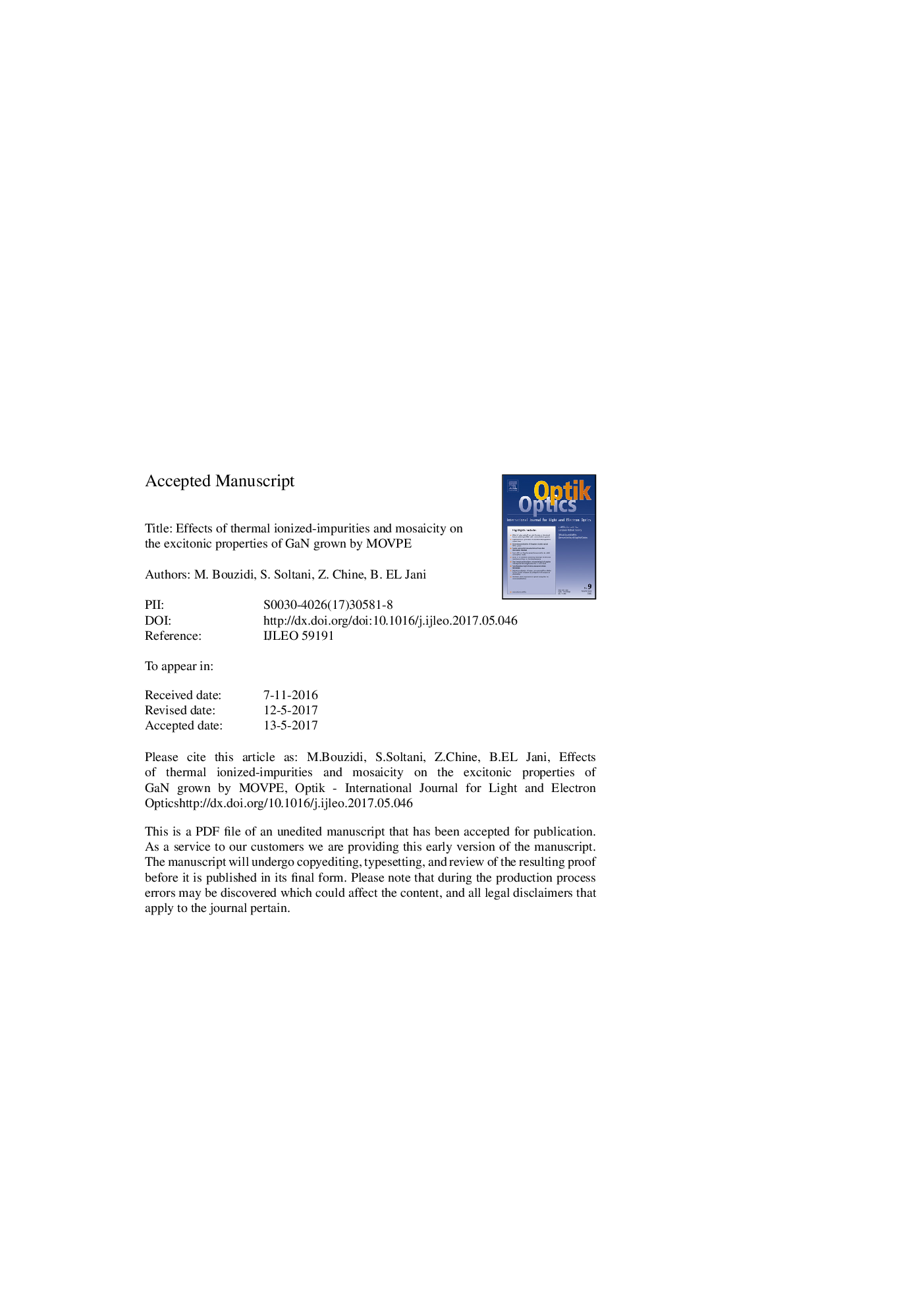| Article ID | Journal | Published Year | Pages | File Type |
|---|---|---|---|---|
| 5025154 | Optik - International Journal for Light and Electron Optics | 2017 | 23 Pages |
Abstract
In this work, the effects of thermal ionized-impurities and mosaicity on the excitonic properties of GaN are systematically investigated. For this reason, a number of GaN epilayers with different impurity/defect concentrations have been grown on c-plane sapphire substrates by atmospheric pressure metalorganic vapor phase epitaxy (MOVPE). Variable-temperature photoreflectance (PR) spectroscopy is used, in the temperature range from 10 K to 300 K, to study the thermal broadening of excitonic transitions. A comprehensive comparison between the experimental data and the available theoretical models is presented. The results show that the theoretical models, in which the exciton scattering with thermal-ionized impurity is ignored, fail to account for the experimental data. However, when the exciton-ionized impurity interaction is considered, the simulation results become in good agreement with the experimental data. Based on the last approach, the parameters that describe the thermal broadening of the exciton linewidth are accurately evaluated and discussed. It is found that the exciton-LO phonon coupling strength, which suffers from scattering in the literature, is almost constant for the different samples (ÎLO â 255 ± 15meV), and it is independent to impurity concentration. Furthermore, it is observed that the free exciton transitions have not the same sensitivity to the tilt and twist mosaic interaction, and the C-exciton undergoes a stronger dislocation scattering than FXB and FXA.
Keywords
Related Topics
Physical Sciences and Engineering
Engineering
Engineering (General)
Authors
M. Bouzidi, S. Soltani, Z. Chine, B. EL Jani,
